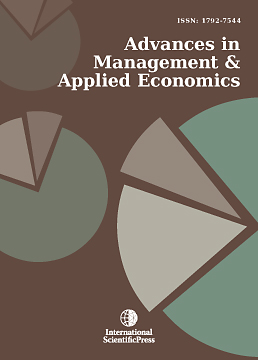Advances in Management and Applied Economics
Major Determinants of Economic Growth under Intermediate and Flexible Exchange Rate Regimes: Empirical Evidence from Turkey
-
 [ Download ]
[ Download ]
- Times downloaded: 9247
Abstract
The aim of this paper is to analyze empirically the major determinants of economic growth under intermediate and flexible exchange rate regimes in Turkey. The cointegration analysis show that there is a long-run relationship between all the variables. The determinants of the growth of real GDP show differences depending on the exchange rate regimes. While the ratios of investment and government expenditures to GDP have positively significant effects on the growth rate of real GDP in the intermediate exchange rate regime, they have negatively significant effects on the growth rate of real GDP in the flexible exchange rate regime. While the openness of the economy has positive effects on economic growth in the intermediate exchange rate regime, it has negative effects on the economic growth in the flexible exchange rate regime. While employment rate has positive effects on economic growth in the intermediate exchange rate regime, it has negative or insignificant effects on economic growth in the flexible exchange rate regime. While the central bank policy rate has negative effects, the inflation rate has positive effects on economic growth in both of the exchange rate regimes.
JEL classification numbers: O11, F43, F33, C32Keywords: Economic growth, flexible exchange rate regime, intermediate exchange rate regime, cointegration, error correction model.
